Investing in antique pianos isn’t as easy as investing in antique tools or books where age can be the primary determining factor. It is far more complicated because many antique or Vintage pianos are in circulation.
All with varying criteria for their values could bank on either the Manufacturer, design, type, performance or historical significance. Even the unique preference of the interested collector can significantly affect the value of the antique piano in question.
So it’s going to be hard to determine if the antique piano you wish to sell or buy has a fair price tag, as there’s no definite guide. However, with the helpful guidelines, we’re about to discuss, you should be able to tackle the tricking market for Antique pianos.
Please read on…
Table of Contents
9 Popular Antique Piano Brands
Antique pianos are a great way to get involved in music or if you’re already playing, to improve your skills. Not only do they look beautiful, but they also have a unique sound that can’t be replicated by modern-day pianos. Now, we’ll introduce you to some of the most popular antique piano brands so that you can find the perfect one for you.
1. Steinway
Steinway & Sons was founded in 1853 by Henry E. Steinway. The company started as a small piano shop in New York City and has since become one of the leading piano manufacturers in the world. Steinway pianos are known for their quality craftsmanship and attention to detail.
2. Baldwin
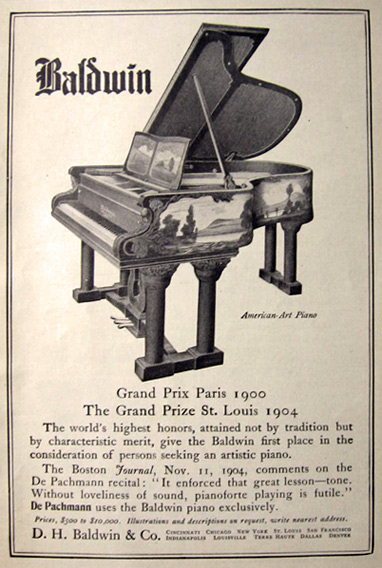
Baldwin was founded in 1862 by Dwight Hamilton Baldwin. The company started as a small music shop in Cincinnati, Ohio and has since become one of the leading piano manufacturers in the United States. Baldwin pianos are known for their beautiful sound and touch.
3. Yamaha
Yamaha was founded in 1887 by Torakusu Yamaha. The company started as a manufacturer of hand-crafted reed organs and has since grown into a global corporation that produces a wide range of musical instruments, including pianos. Yamaha pianos are known for their excellent quality and durability.
4. Kawai
Kawai was founded in 1927 by Koichi Kawai. The company started as a small piano repair shop in Hamamatsu, Japan and has since grown into a leading piano manufacturer. Kawai pianos are known for their beautiful sound and craftsmanship.
5. Bechstein
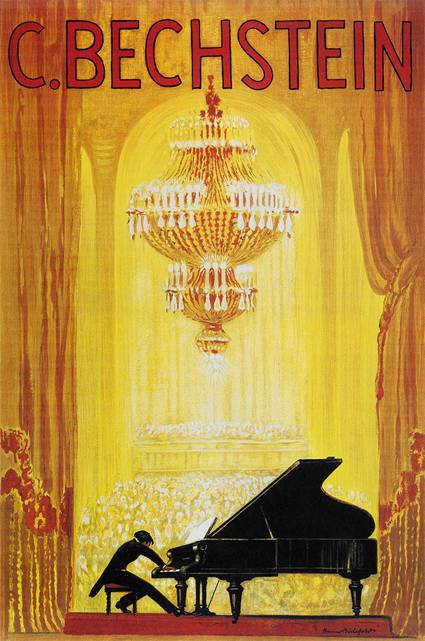
Bechstein was founded in 1853 by Carl Bechstein. The company started as a small piano shop in Berlin, Germany and has since become one of the leading piano manufacturers in the world. Bechstein pianos are known for their beautiful sound and touch.
6. Blüthner
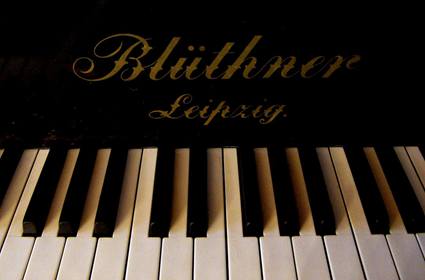
Blüthner was founded in 1853 by Julius Blüthner. The company started as a small piano shop in Leipzig, Germany and has since become one of the leading piano manufacturers in the world. Blüthner pianos are known for their beautiful sound and touch.
7. Bosendorfer
Bosendorfer was founded in 1828 by Ignaz Bosendorfer. The company started as a small piano shop in Vienna, Austria and has since become one of the leading piano manufacturers in the world. Bosendorfer pianos are known for their unique sound and touch.
8. Chickering
Chickering was founded in 1823 by Jonas Chickering. The company started as a small piano shop in Boston, Massachusetts and has since become one of the leading piano manufacturers in the United States. Chickering pianos are known for their excellent quality and craftsmanship.
9. Knabe
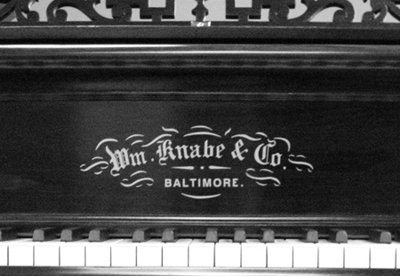
Knabe was founded in 1839 by Henry Engelhard Steinway. The company started as a small piano shop in New York City and has since become one of the leading piano manufacturers in the United States. Knabe pianos are known for their beautiful sound and touch.
10 Most Valuable Antique Piano Worth a Fortune
No. |
Rare Antique Railroad Lantern |
Price ($) Mint Condition |
Price ($) poor Condition |
1 |
Fully Restored Walnut Case Bechstein Antique Upright Piano G’tee Delivery Stool |
90,000 |
20,000 |
2 |
STEINWAY & SONS Grand Piano mudguards Grand Piano concert Grand Salon Grand |
20,000 |
4,000 |
3 |
Bechstein Model A Grand Piano Made Around 1920. Fully Restored |
13,000 |
2000 |
4 |
Vintage Heirloom Quality Kohler & Campbell Studio Piano with Bench |
1200 |
200 |
5 |
Steinway Model A III 2021 / 1935 Slightly Darker Tone. Custom Rebuilt |
70,000 |
10,000 |
6 |
George Rogers & Sons Upright Piano (42099), 1932, 88 keys, |
600 |
100 |
7 |
Baldwin Spinet Piano Vintage 1960’s Ebony W Upholstered Bench Mirrored/ab Keys |
1000 |
200 |
8 |
C. Bechstein Upright Piano (38195) Berlin Model IV, 1895, Ebonised finish |
1000 |
200 |
9 |
Knabe Baby Grand Piano Model KN-520; Gloss Black With Bench; Exceptionally Clean |
7000 |
350 |
10 |
Schiedmayer Grand Piano with warranty |
5500 |
250 |
10. Fully Restored Walnut Case Bechstein Antique Upright Piano G’tee Delivery Stool
It is a stunning Bechstein upright piano with a Walnut brown hue and impressive ornate designs. For a piano from the 1920s, one can’t help but admire how pristine it remains after a century since its date of manufacture. However, some refurbishing occurred, but it’s the kind that helps to boost its value.
Initially, the piano mechanics was initially not in good shape. Then after some repairs, it sounds perfect, as though it is new. Overall, the piano is a gem, mainly because it’s one of the most sought-after models in today’s market.
Price $(14000 – 90000)
9. STEINWAY & SONS Grand Piano mudguards Grand Piano concert Grand Salon Grand
From a glance, you can tell the piano is quite aesthetically pleasing with its caramel brown hue and hint of patina. It would go great with any sitting room setting as long as it can fit because the piano is a big one that is not far in size from the average baby grand piano.
Another great feature about the piano is its mechanics, free of rust or dents and good enough to affect its ability to play, given its piano from the early 1900s.
Overall, the piano’s condition is new-like. And should have a great resale value.
Price $(20000)
8. BECHSTEIN MODEL A GRAND PIANO MADE AROUND 1920. FULLY RESTORED
Here’s another Bechstein piano, but this time, it’s a grand piano from the 1920s. It is very passing with its brown hue and ornate Markings, thanks to the fact it is a fully restored piece. It also means it should be good mechanically to the point it would sound.
The size of this grand piano is slightly oversized. So tight it does not comfortably fit in a small sitting room.
Price $(13000)
7. Vintage Heirloom Quality Kohler & Campbell Studio Piano with Bench
It is a small Spinet piano with a brown hue with a matching bench. Its overall condition is good. It means it has scratches from aging, which calls for some level of reconditioning. And its mechanics are working just fine, although it may require some level of repair.
Price $(1200)
6. Steinway Model A III 2021 / 1935 Slightly Darker Tone. Custom Rebuilt
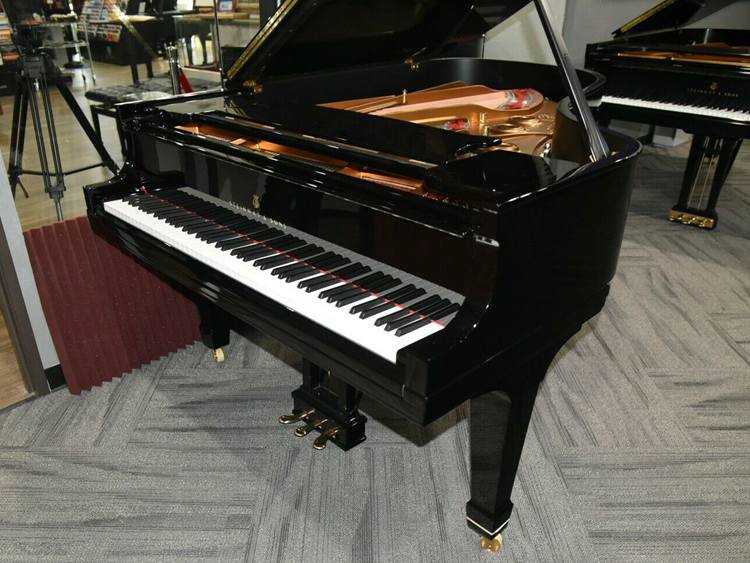
Here’s a top-level Steinway reconditioned and repaired 1935 baby grand piano, which comes in a gloss Ebony finish. Its overall condition is mint, with its body free of scratches, and it plays pure sounds as though it’s new.
Price $(70000)
5. George Rogers & Sons Upright Piano (42099), 1932, 88 keys
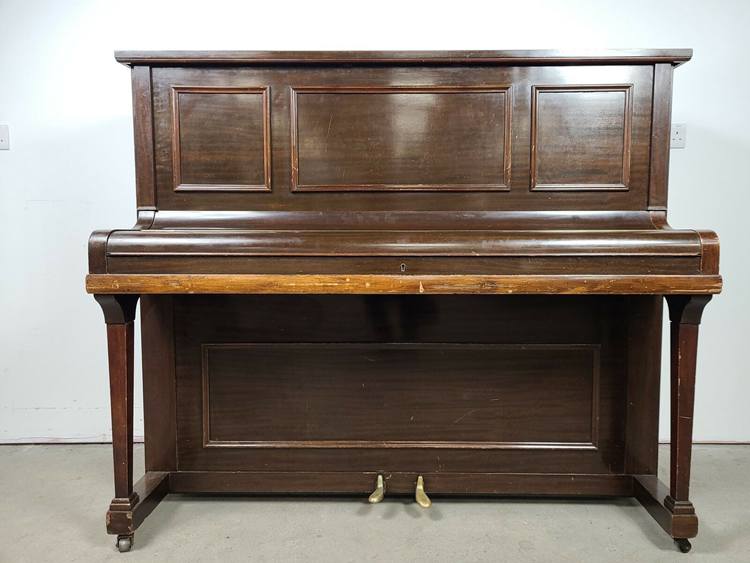
This upright piano is from 1932. It possesses a brown hue that goes well with any sitting room setting. Even small ones as their size can accommodate it. The overall condition of this piece is good because it has signs of wear due to aging and a lack of refurbishing. Also, the mechanical part of the piano is slightly problematic as the strings are rusty, and the sound that comes out of it isn’t soothing enough.
Price $(600)
4. Baldwin Spinet Piano Vintage 1960’s Ebony W Upholstered Bench Mirrored/ab Keys
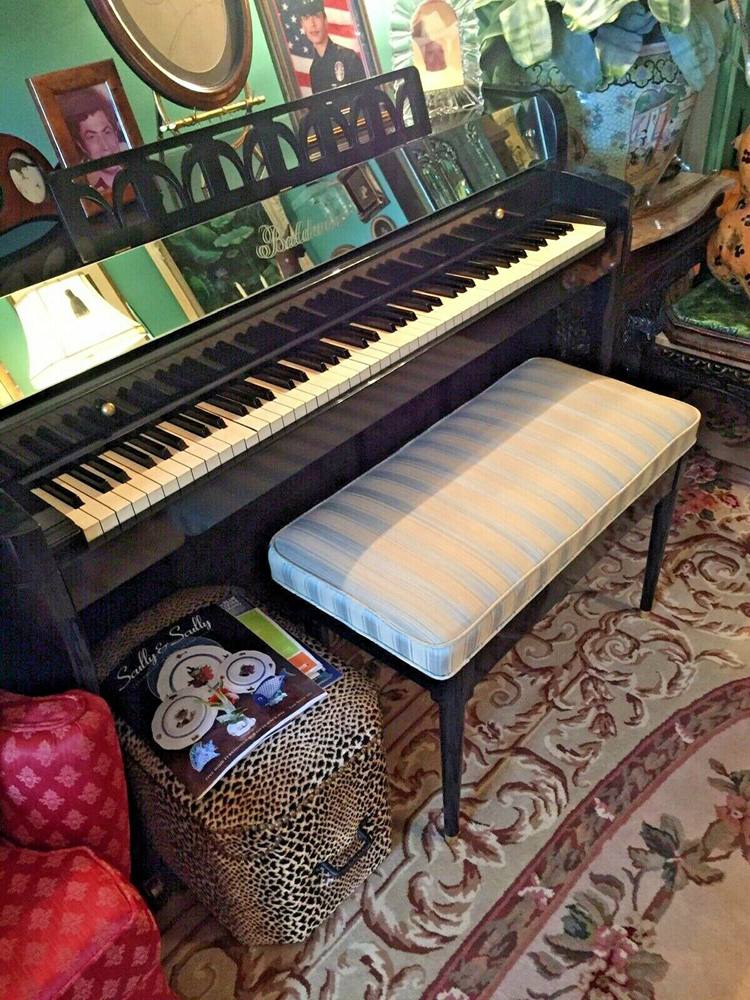
Here’s a mid-century Spinet Piano that comes with an upholstered bench, and it has a glossy black finish free of scratches and other forms of wear. The unique part about this piano is the 52 white keys and 36 black keys, which all function perfectly.
Overall, the Spinet Piano is in mint condition.
Price $(1000)
3. C. Bechstein Upright Piano (38195) Berlin Model IV, 1895, Ebonised finish
It is Bechstein in a fair condition, which means the piano is unrefurbished with some significant issues such as excessive blemishes and scratches. The mechanics of the piano is abysmal, with poor playing capabilities.
However, after a complete restoration, this piano could still have a high resale value.
Price $(1000)
2. Knabe Baby Grand Piano Model KN-520; Gloss Black With Bench; Exceptionally Clean
A rarely used 1920 baby grand piano in black is a high-end Knabe piano. It means its mechanics are on point so that it plays clear and harmonious sounds free of noise. However, there seem to be scratches and cracks at the edges of the piano. Although, the piano’s overall condition is near mint.
Price $(7000)
1. Schiedmayer Grand Piano with warranty
It is a 1920 schiedmayer grand piano in excellent condition. The piano is delicate mechanically, as the sounds that come out of it are harmonious and can be soothing. As though it is new. Its physical appearance is beautiful with its matte black hue, and gold plated panels.
Price $(5500)
The Value of Popular Vintage Piano
| Price Range Of Popular Vintage Pianos ($) | |||
| Age | Steinway & Sons | Other European Piano Brand | Popular Asian Piano Brands (Yamaha, Samick, Kawai) |
| 40+ years | 1000 – 15,000 | 0 – 20,000 | 0 – 200 |
| 20 – 30 | 40,000 – 60,000 | 1000 – 20,000 | 200 – 400 |
| 10 – 20 | 45,000 – 70,000 | 1000 – 50,000 | 2000 – 20,000 |
What Makes An Antique Piano Valuable?
Here are factors that can add value to your antique piano:
Age
Age, however, has an indirect effect on the value of an antique piano. How? Antique pianos aren’t in demand because they’re hundreds of years old. But pianos of that age possess rarer intricate Aesthetics and working parts that may be impossible to fix, just like a grand piano from the 1800s. So in this scenario, antique pianos are valuable.
However, a semi-rare piano that’s barely 100 years old and in fair condition may not hold more value than a 50-year-old piano in excellent condition. In such a scenario, age is no longer a significant factor, as the performance and state of the piano are more likely to attract potential buyers.
Historical Significance
Another factor that can affect the value of your antique piano is its historical significance. For instance, if the antique piano in question happens to be one of the first batches of pianos of a particular brand, it can hold more value. Another case is if the antique piano was previously in the hands of someone significant in history (like a musician) or from a place of significance, then its value is also high.
Note: This factor applies to a narrow pool of collectors who happen to be extreme enthusiasts or academics ls that hold this factor of higher value. Even if they do, the likelihood that you’ll sell to them at a higher price is somewhat low.
Manufacturer
The brand of the antique piano can affect its value. How? There are certain manufacturers of pianos that are known for making top-quality versions of a specific piano type. For instance, Steinway and Sons is a more popular brand for making antique grand pianos than Schiedmayer, known for making baby grand pianos.
Casework Design
If your antique piano is an art piece level of unique Aesthetics, it will be more attractive to potential collectors and buyers and could have a better resale value. You can mostly find such pieces from the mid to late 1800s. Their designs are more uniform for pianos from the 1900s, so their value isn’t guaranteed to be that high.
Type
There are up to 6 types of antique pianos you can find in the market today. They include:
Square Grand Piano
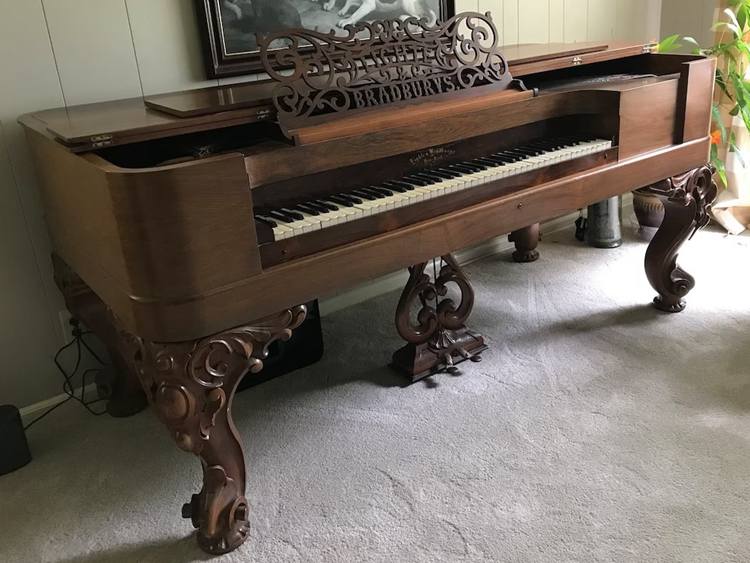
This type of piano is a well-boxed grand piano that is a lot more space-convenient. It’s also unique in today’s market because it was discontinued 125 years ago. Even piano tuners or restorers with the skill and expertise in handling this type of piano are rare or non-existent. Such pianos are bound to break down and remain irreparable.
Baby Grand Piano
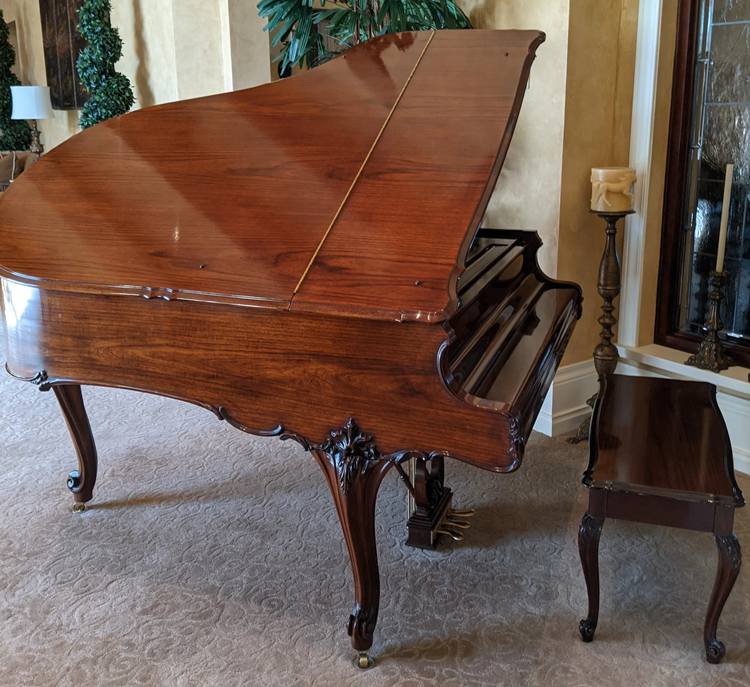
It is one of the most popular types of antique piano mainly for its size, which is excellent for small spaces and can go well with smaller sitting rooms or any small space. The average length of a baby grand piano is merely 1.5 meters.
Grand Piano
Such a type of piano is well known for this large. You can find It to be at least 2.2 meters large in size. And you can find them to be up to 3 meters large.
Upright Piano
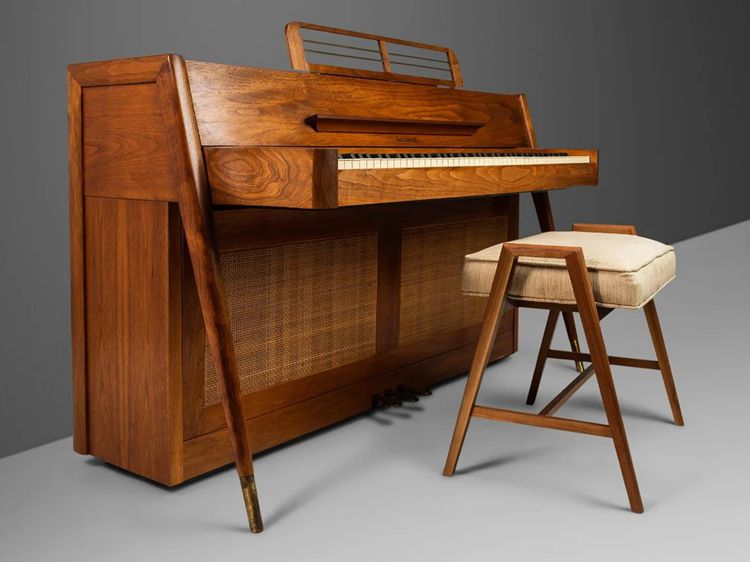
Since its invention in the early 1800s (1826), upright pianos have been cheaper than grand pianos. At the same time, it could fit comfortably in a small sitting room.
Note: upright pianos are naturally inferior to grand pianos in terms of value. However, if they possess historical significance, their value is likely to match or surpass some grand pianos.
Mirror Piano
You can quickly identify a mirrored piano from Its short height and its excessive use of mirror paneling in its design. This type of piano came into the market around World War 2. This explains why its style is too bland because most of the efforts towards production shifted to war. The best improvement they could do was to replace its paneling with mirrors.
Mid-century modern Pianos
These types of pianos are vintage, and they’re of two categories: the spinet and console piano. They were popular during and after the great depression. Compared to the other types of pianos above, they are much smaller. However, the console pianos are slightly more significant than the spinet.
Note: they’re far less valuable in the market than mirror pianos, except if it has Provenance.
How It Is Restored…
The manner of your antique or vintage piano restoration can significantly affect its value. For instance, the piece or part required to make your antique piano playable must not be modern, as this could bring its value down by a lot. You need to find the actual antique version of the part to keep its value up.
Antique Piano Identification: How to Identify Your Antique Piano
The easiest way to identify the brand of your antique or vintage piano is via the Markings on certain parts of the piano. It is different for every type of piano:
For Grand Pianos – you can find the Manufacturer’s marks on the soundboard, around the lyre of the foot pedal, or on the top part of the piano standing support legs.
Upright pianos – the best place to find the manufacturer Markings (name and serial numbers) on an upright piano is within the piano. Usually above the string section of the piano.
How To Age Your Antique Piano
You can easily find the age of your antique piano from the serial number, which is close to where the location of the brand name. The serial number in question is at least four digits minimum and up to 7 digits maximum, whereas the pianos with fewer numbers are far older than those with more.
To track the age of your piano with serial numbers is a very rigorous process that can quickly get complicated. The best way to go about it is by inputting the serial numbers or the piano’s distinct feature into the catalog search box on Clinkscale so that you can find the actual age of your piano.
Note: it’s far better to hire a professional who will help find the age of your antique piano via its serial numbers.
How to tell how much your antique piano is worth
Here are several ways to determine the value of your antique piano:
Condition
The condition of your antique piano dramatically determines how well you get to sell it. If it’s in the best shape, it will sell for a higher price than if it was in a fair condition. Here are several ways to rate your piano based on its state:
Mint – pianos in mint condition mean it works fine as though it’s new. And its appearance is impressive because such pianos are usually refinished and rebuilt to be in this type of condition.
New-like: An antique piano is usually in perfect working condition in this state. But it may have some nicks and scratches. Pianos in this condition were usually hardly used, or they were well maintained.
Excellent – the piano is similar to the pianos in the like-new condition. That is, no dents nor rusted strings. However, the only difference is the excess scratches and blemishes on the piano’s surface.
Very good – for your antique piano to be in a perfect state, there are blemishes on the piano’s finish, which may call for some reconditioning. Also, the piano will have no issues playing correctly.
Good – The piano will need some revamping to be valuable again in this state. And you must perform repairs to Curtail for all the minor mechanical issues.
Fair – this is the worst state of an antique piano because your antique piano would be rusting, with lots of scratches, blemishes, and extreme mechanical issues. Also, this state risks abandonment. Especially if it’s a rare piece like the grand piano, as restoration experts specializing in them are widely uncommon.
Rarity
Another great way to determine the value of your antique piano is to identify if it’s a rare piece. To be rare, It must possess a feature that significantly distinguishes it from all other available pianos. For instance, a regular upright piano is not so pricey, but it can be worth far more than even the grand piano if it’s from a famous musician.
Another example is the type of piano, as the grand piano production stopped quite a long time ago (125 years). So such a piano is bound to be rare. Even amongst them, there are antique grand pianos that no longer have a stable working system because an expert in fixing grand pianos is extremely hard to find. Even if you do, the services are going to be expensive.
Performance (is it working?)
For your antique piano to be valuable, it must also be mechanically sound enough to play as though it’s new. Even if it’s not perfect, it can still hold good value because it’s revivable. But if you can’t even play any tune with the piano, it will not value unless the interested collector or buyer has more sentimental value for the pieces than usual.
Compare to Recently-Sold Pieces
Suppose you’re still not satisfied with your evaluation. In that case, you can still compare the antique piano in hand with the recently sold replicas or pianos of the same type from auctions, stores, and any online marketplace like eBay.
Here are some recently sold antique pianos that should give you an idea of the market:
- An upright piano in excellent condition was sold for $2000.
- An 88keys grand Whitney grand piano was sold for above $200.
- A Steinway and sons upright grand piano was sold for $8000.
Hire an Appraiser
This method can be your last resort if you don’t have much in your budget, as it can cost a lot to get a quality valuation and advice on your antique piano from an appraiser—especially the one who has experience with antique pianos. Besides evaluating your antique piano, they could also recommend the type of restoration to increase or keep its value stable.
Where to find them? You can access their services via appraisal sites specifically for antique pianos. You can also find them in forums like:
Where to sell your antique piano
A convenient way to sell your antique piano is via online peer-to-peer marketplaces like Etsy and eBay. The advantages of using these sites are:
- Access to a broader customer base
- Very convenient to use
- Fees for using such marketplaces are affordable
However, you may not have the luxury of examining the antique piano you wish to buy. Shipping the piece could also lead to the development of new damages. And you won’t get help with valuing your piano Unless the marketplace also offers that service. Another convenient way to sell your piano is offline marketplaces such as antique stores, estate sales, garage sales, local antique stores, and auctions.
FAQs
Q: How do you value your antique piano quickly?
- A:Look for the brand’s name online to track the price of a similar piano at auctions or online marketplaces.
- Then find out if there’s any sign of repairs to get an idea of its previous value. But if it was never repaired or serviced, you may need to find a professional who will help value the piano properly.
- If none of the methods outlined above works, you can always look for support on forums specializing in antique pianos.
Note: antique pianos made in the last or within the last hundred years are bound to depreciate.
Q: Where do I find piano restorers?
A: Here’s a list of top-rated antique piano restorers:
- Shaffer piano
- Antique Piano Shop
Q: Does restoration affect the value of your Antique piano?
A: Yes, it does. For instance, if a famous brand doesn’t make your antique piano, its design is one of the cheapest types, and it can’t play sounds properly. Its value will increase as long as the playing ability of the piano is restored.
But In the scenario where the piano is historically significant and from a famous brand, making substantial repairs such as changing its frame can lead to devaluation—or replacing certain parts with more modern components.
Conclusion
By now, you should be able to invest in the antique pianos market with confidence. As we’ve provided all, you need to know how to effectively identify them, value them quickly, and even sell them. Thus, giving you the edge at making much smarter and high-gaining decisions that will not let you regret an antique buy or sale.
Also, we have a unique table that should give you an idea of the pricing of certain antique pianos, along with a top 10 round-up of antique pianos to compare with your antique piano.
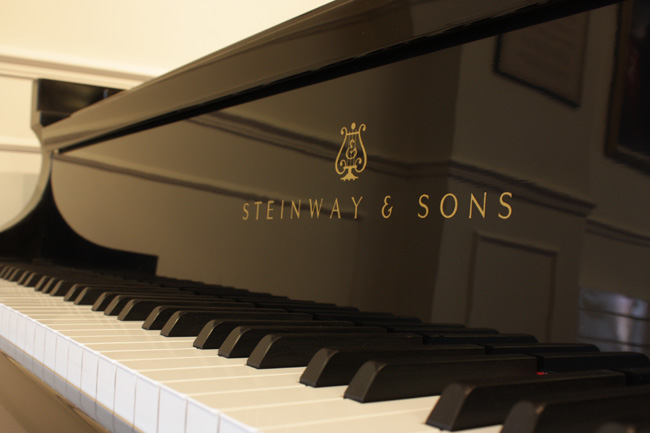
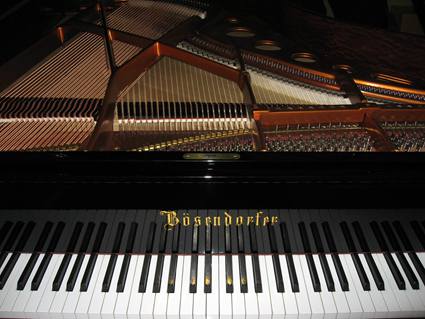
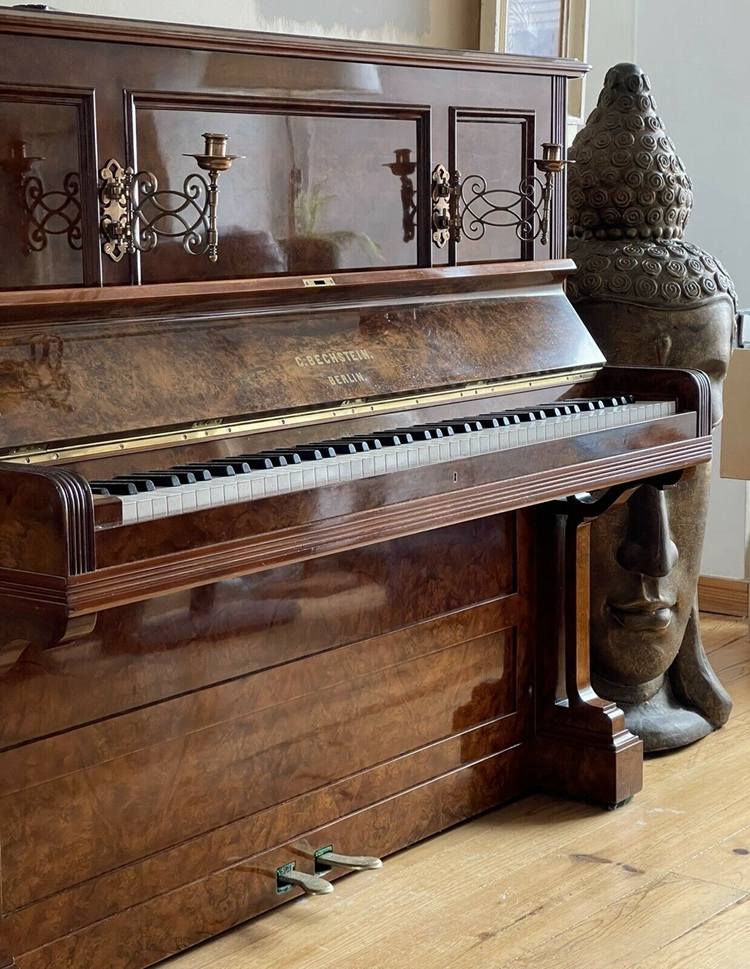
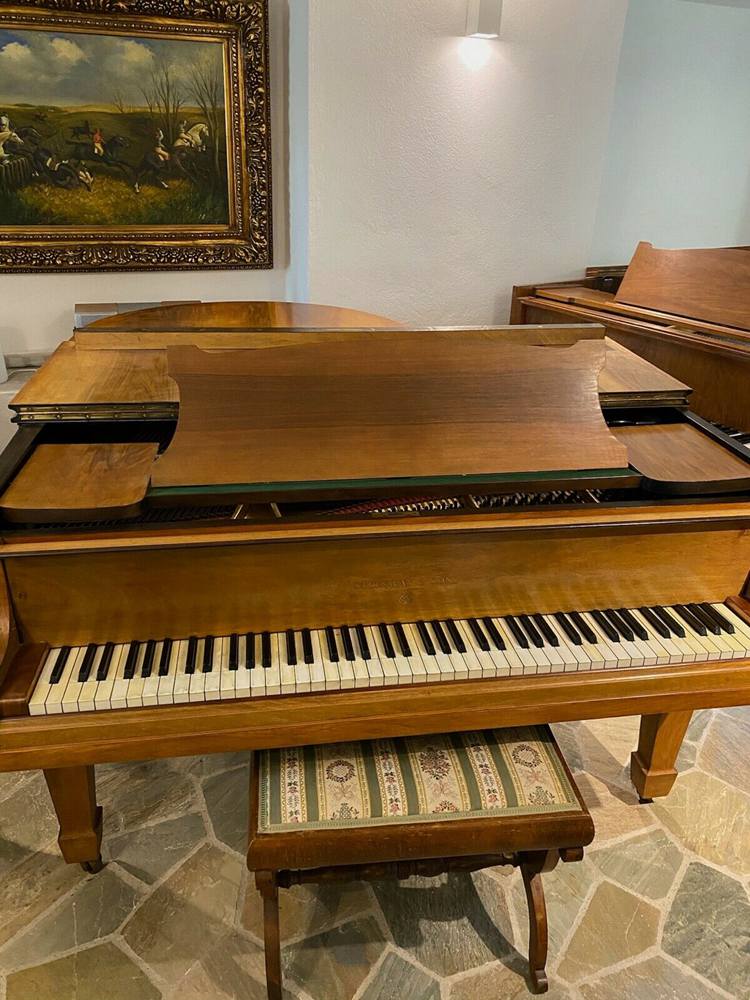
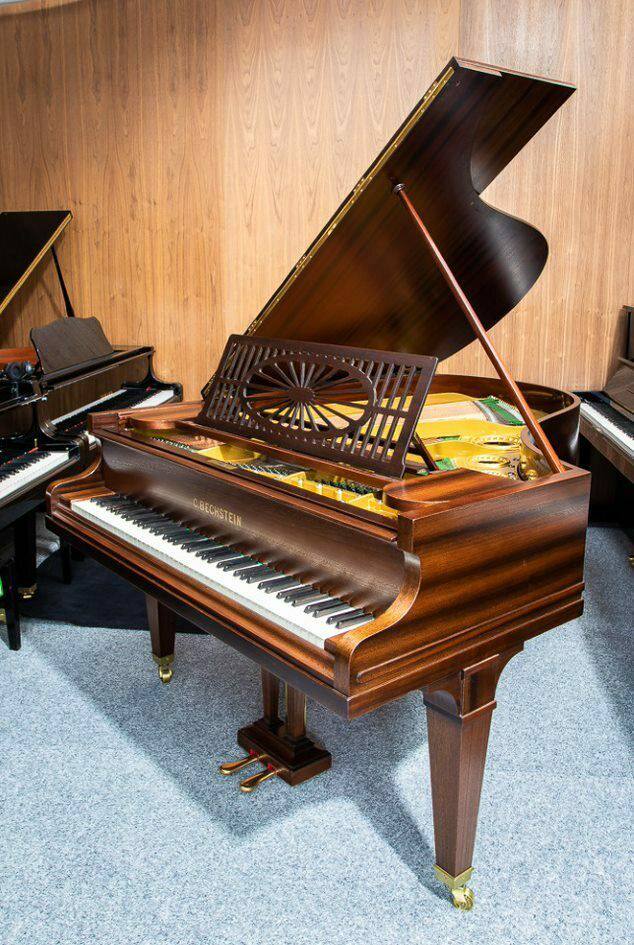
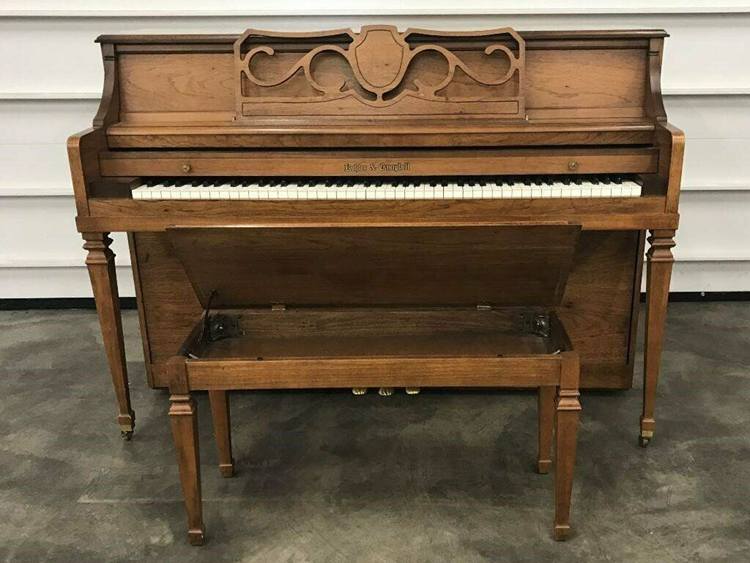
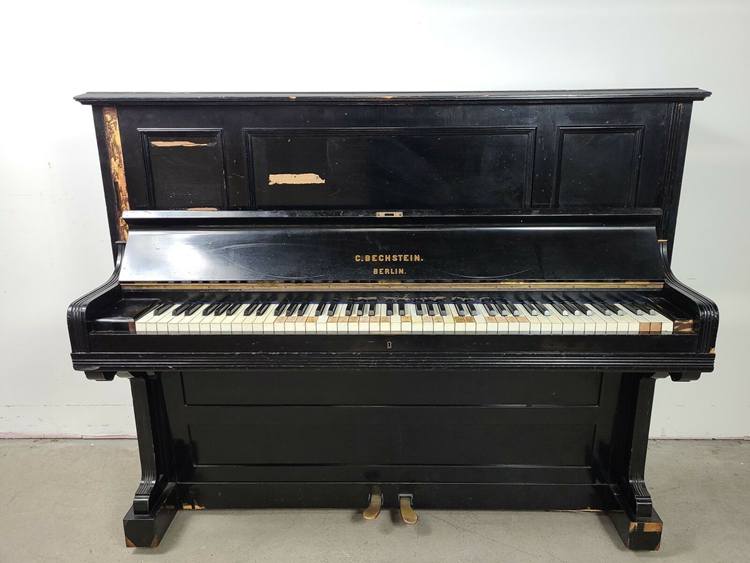
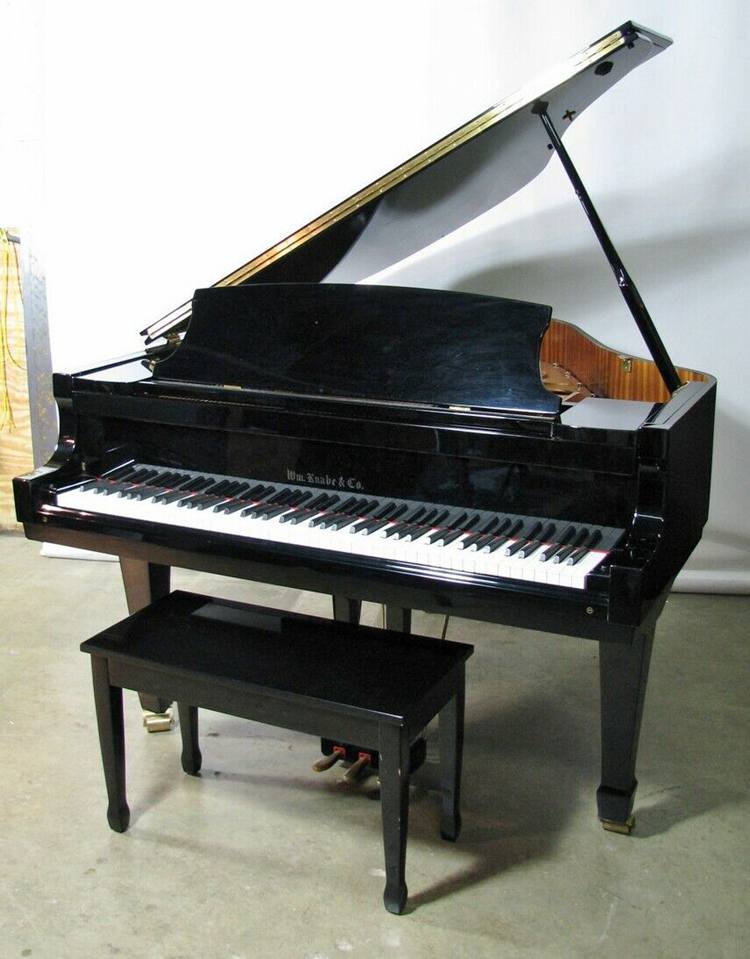
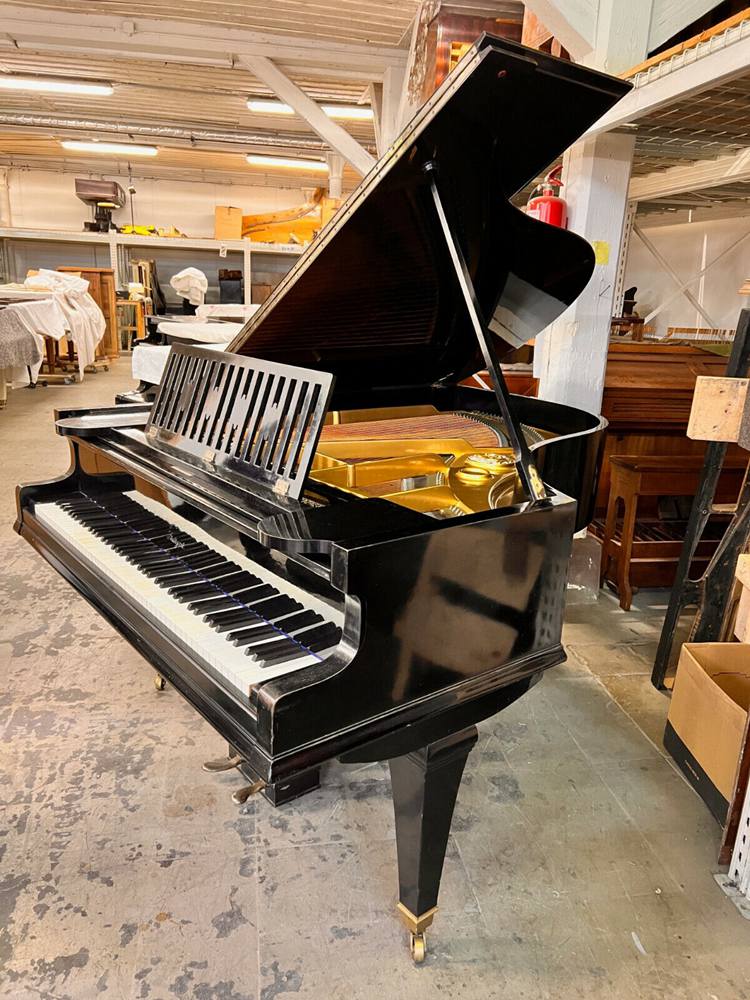
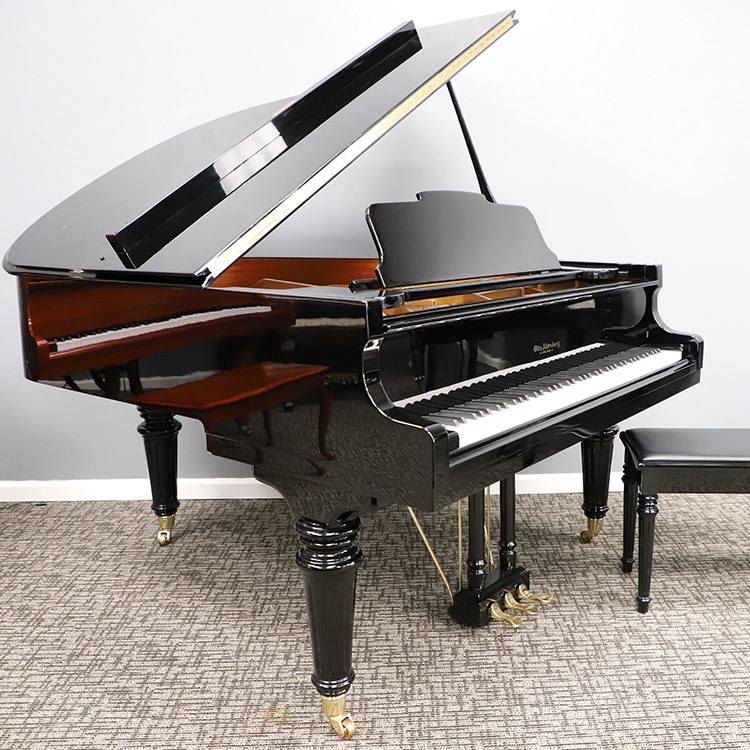






![Vintage Schwinn Bikes: [Types, Identification, and Values]](https://www.txantiquemall.com/wp-content/uploads/2022/05/5.-Schwinn-1967-Ramshorn-Fastback-Stingray-Sky-Blue-vtg-600x450.jpg)
